Mother In Law’s Tongue (Snake Plant) Care & Maintenance
The Thing Is That These Snake Plants Are Low Maintenance And Do Not Need Specialized Attention
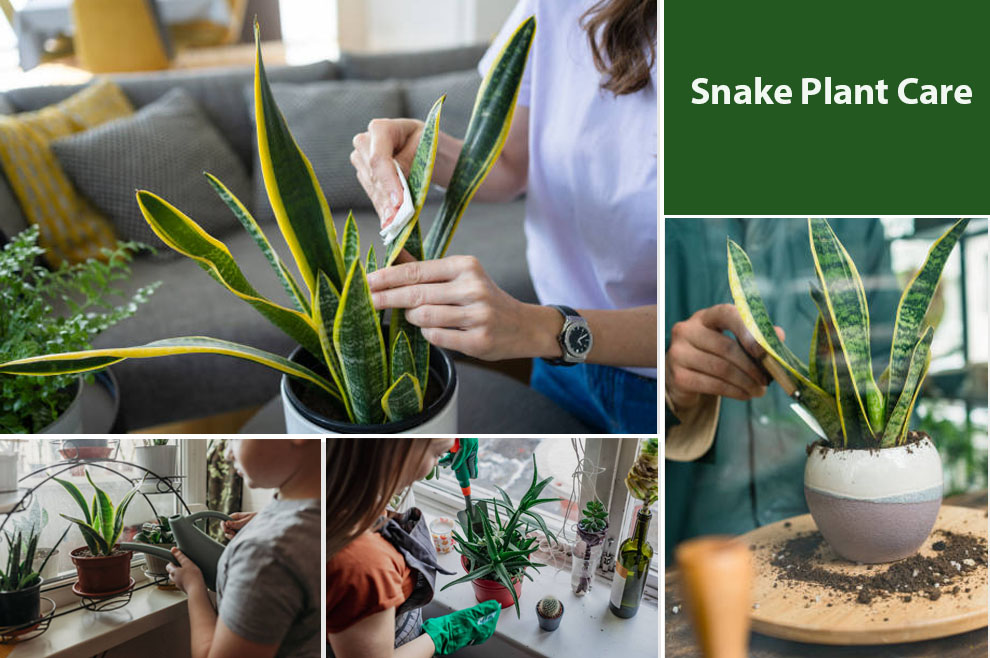
Botanically called the Dracaena Trifasciata, the Snake Plant is one of the hardiest houseplant species and is native to southern Africa, Europe, and Asia.
Also known as sansevieria and mother-in-law’s tongue, Snake Plant is becoming increasingly popular. Deservingly so! Since it is a highly forgiving plant, snake plant maintenance is easy, making it one of the ideal choices for beginners. They better the air quality at home and work as excellent air purifiers. You can grow them outdoors around the year in USDA hardiness zones eight and warmer.
What should you do for snake plant/mother in law’s tongue care? As stated, caring for snake plants is easy. They are almost indestructible. Snake plants can thrive in the house’s dark corners or bright light.
However, they experience curtailed development in indoor light, but amplifying light exposure with indirect sun can enhance the growth of the snake plant.
Ideally snake plants prefer well-drained sandy soil, indirect sun to partial shade, little watering every two weeks and moderate humidity to thrive.
Freezing temperatures and excessive water work against the plant. Extended exposure to cold temperatures can hamper the foliage and the soggy soil results in root rot.
How Do You Take Care Of A Snake Plant: An Overview
| Scientific name | Dracaena trifasciata (was earlier known as Sansevieria trifasciata) |
| Other common names | Viper’s bowstring hemp, St. George’s sword, Mother-In-Laws Tongue, |
| Type | Evergreen, perennial |
| Soil type and pH | Well-drained sandy soil – slightly acidic to lightly alkaline |
| Sun | Shade to partial sun |
| Temperature | Enjoy a warm climate, but suffer damage from prolonged exposure to a temperature below fifty degrees Fahrenheit. Typically, the plant enjoys temperatures between 70 and 90 degrees Fahrenheit. |
| Water | Snake plant needs watering only fortnightly. Ensure that the topsoil dries before you rewater it. In winter snake plants need watering once a month for good health. |
| Humidity | It does best in a room where humidity is at forty percent. |
| Fertilizer | A mild cactus fertilizer during the growing season or a slow-release, balanced, liquid 20-20-20 (diluted to half strength) or a 10-10-10 fertilizer is ideal. Avoid winter fertilization. |
| Flowers | White flowers appear in Spring, but flowers are rare. |
| Mature Size | Six to eight feet |
| Toxicity | Toxic to cats and dog |
Taking Care Of Snake Plant
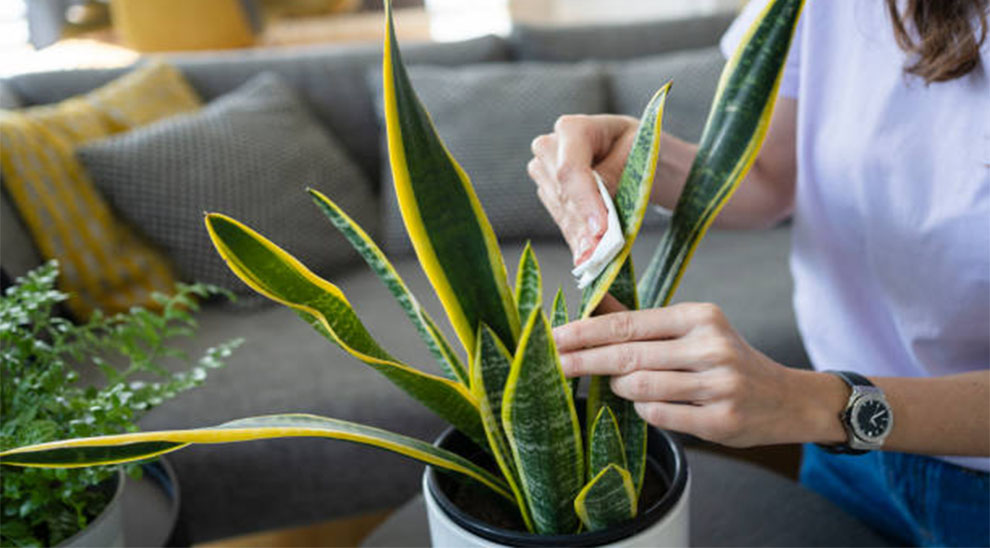
Snake plants are famous for thriving on neglect. They do well even if you plant them and forget all about them. Even the lightest watering can suffice the plant’s needs.
Hence, most people call them unkillable, making them a suitable pick for beginners who like some green company in their busy schedule.
However, you must be cautious if you have pets, children, or babies at home because snake plants can be toxic if ingested. It does not mean they are cold-blooded killers, but it still makes sense to keep them out of reach of furry friends and children.
Now, let us discuss below the recommended snake plant care instructions:
1. Pick The Right Snake Plant
When shopping for the snake plant, pick one with dark green leaves. If the plant has pale leaves, it may speak badly about its health. Now, assess if you must repot the plant. If yes, place it in a porous material or terra cotta pot, and add a potting mix with good drainage.
2. How Should You Plant It?
Mother in law’s tongue care starts from the moment you decide to plant it because there are some specifics associated with it. After you bring a snake plant home, botanists recommend keeping it in the original pot for a while.
You must repot it instantly only if its roots stretch out of the pot. But, since they are slow-growing plants, you may not have to repot them frequently.
However, when it outgrows the current container, repot it into a slightly bigger pot, preferably in spring. If you have a tall snake plant, opt for a heavy pot to prevent it from toppling over.
Adding cactus, houseplant compost, or ordinary peat-free multi-purpose compost with horticultural grit can improve soil quality.
3. Where Should You Place Your Snake Plant?
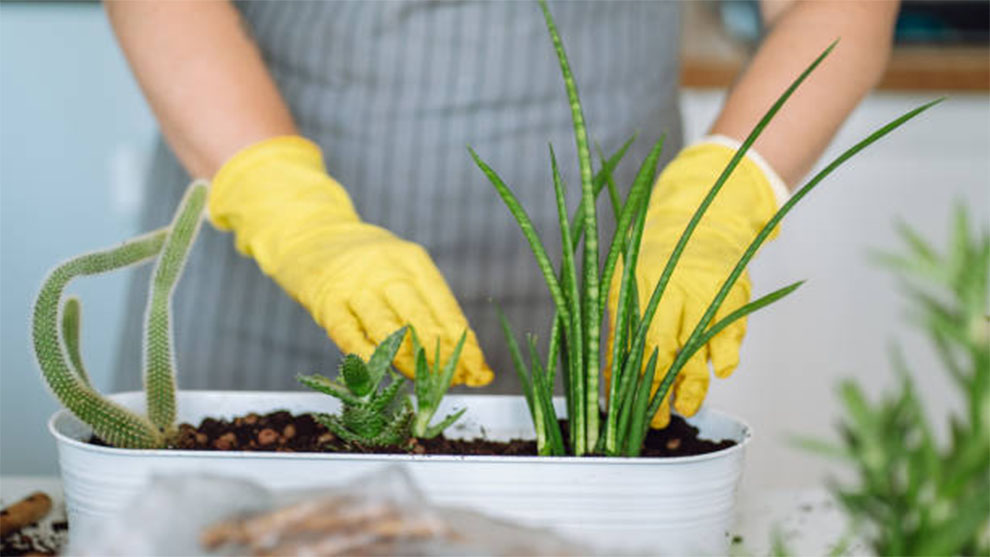
Selecting the proper site for growing snake plants is important. Opt for a bright spot away from direct sunlight. Even though the plant can grow in a dark corner, it may experience stunted development, and the plant might also lose some of its attractive leaf variegation.
4. Ensure The Soil Is Ideal For Snake Plant Maintenance.
All types of snake plants thrive in a well-draining, loose potting mix. They also do well in sandier soils. Opt for a potting mix low on peat. Peat is beneficial in multiple conditions.
However, it may get compacted and have trouble draining or rehydrating. An all-purpose cactus potting soil is the best pick for snake plants.
5. How Much Water Do Snake Plants Need?
From spring through autumn, you must water the snake plants when the soil is dry up to two inches down. But in the winter, ensure the soil is dry before rewatering. Experts recommend watering once every two weeks for a healthy, growing plant.
Sticking to the plant’s watering schedule is one of the most crucial snake plant care tips to bear in mind. While watering, do it thoroughly, ensuring the excess water drains onto the plant saucer.
Now, wait at least ten minutes for the container to drain completely, then discard all the excess water from the saucer.
It is known as flushing and can help keep the calcium salts and fertilizer from accumulating, as that may result in white scum on the soil’s surface or brown burns on the tips of the leaves.
6. Are Snake Plants Heavy Feeders?
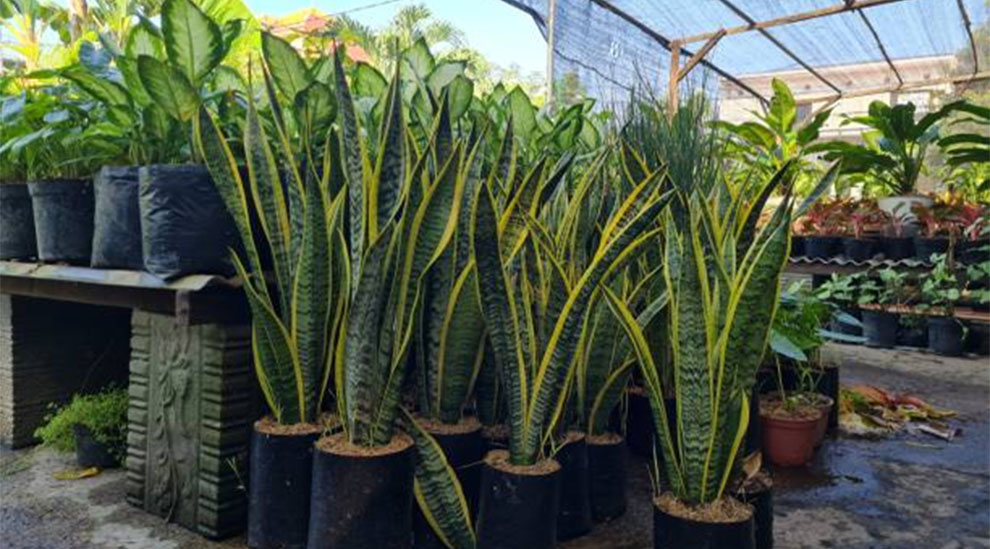
For snake plants, fertilizer is not quintessential. You can fertilize them twice a year to keep your plant healthy and growing. Any good plant fertilizer with vital nutrients required by the snake plant will work.
7. What Is The Suitable Temperature And Humidity For The Snake Plant?
Maintaining the right temperature and humidity is one of the most imperative aspects of snake plant care instructions. The plant can do well in various temperatures and humidity conditions, but they are most suitable for an environment wherein the temperature is above and about 50 degrees Fahrenheit.
Sadly, they are not frost-tolerant, and persistently cold temperatures can result in scarring on the leaves and irrevocable damage.
The humidity indoors might not suffice the plant’s needs in the winter. You can consider misting your plants to maintain the humidity. But that is not a mandate with the snake plants because they adapt to lower humidity levels.
So, you do not need to mist them. Moreover, excessive moisture is not healthy for the plant. It can result in mold growth.
8. Should You Prune The Snake Plant?
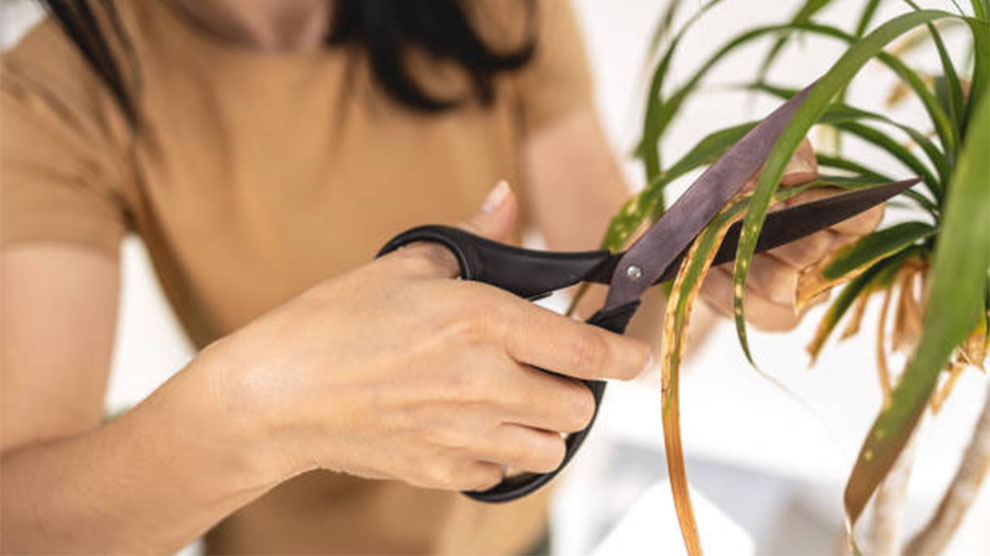
Anytime the snake plant has damaged leaves, you may want to do some snake plant maintenance by chopping them off. Using a sharp blade, start pruning the snake plant.
You have to cut the stalk you wish to remove at the base. Keep it as close to the soil as possible. If the leaves are dry and drooping, you may try to pull them out or tug them. If it is nearing its end, it will come off easily.
9. Troubleshooting Root Rot
Overwatering is one of the more prevalent causes of root rotting. If root rotting occurs, remove the drying leaves, and let the plant dry out more than usual.
Snake plants are durable and recover quickly, but if the plant continues to die, please take it from the pot, discard the rotted leaves and roots, and repot it in fresh soil.
Is Snake Plant Care Indoors Different From Snake Plant Care Outdoors?
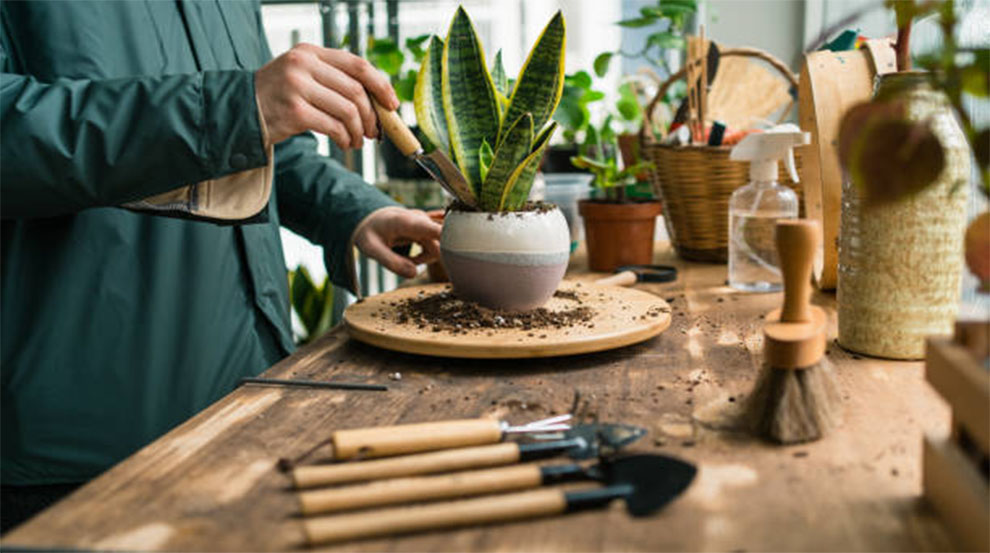
Even though snake plants grow best indoors with limited sun, you can grow them outdoors. Please remember they cannot tolerate frost and cold temperatures below 45 degrees Celsius.
Here are some tips for taking care of snake plants outdoor:
- Look for the right spot for the plant, ensuring that the location receives bright, indirect sun and is not excessively crowded.
- Water it only once in two days in summer.
- Ensure that the soil has good drainage, place a saucer underneath the plant for water collection, and eliminate all the excess water after 10 minutes from the watering routine to prevent waterlogging and root rot.
- Avoid watering at the center or on the leaves. Water strictly at the pot edges, and do not overwater.
- They are not heavy feeders and can thrive sans fertilizer. However, adding the fertilizer ensures that the plant grows better with greener leaves.
- Repot the plant when it is too big for the pot, ensuring ample space for the root system to spread and grow.
- Keep it out of reach from the kids and pets.
Common Problems and Pest Care
Snake plants are easy to maintain, propagate, and live for years. The main snake plant problems center around watering. Overwatering the snake plant can result in root rot and fungal infections. You might experience the following concerns associated with snake plants that may stunt its growth:
1. Brown Or Yellow Leaves
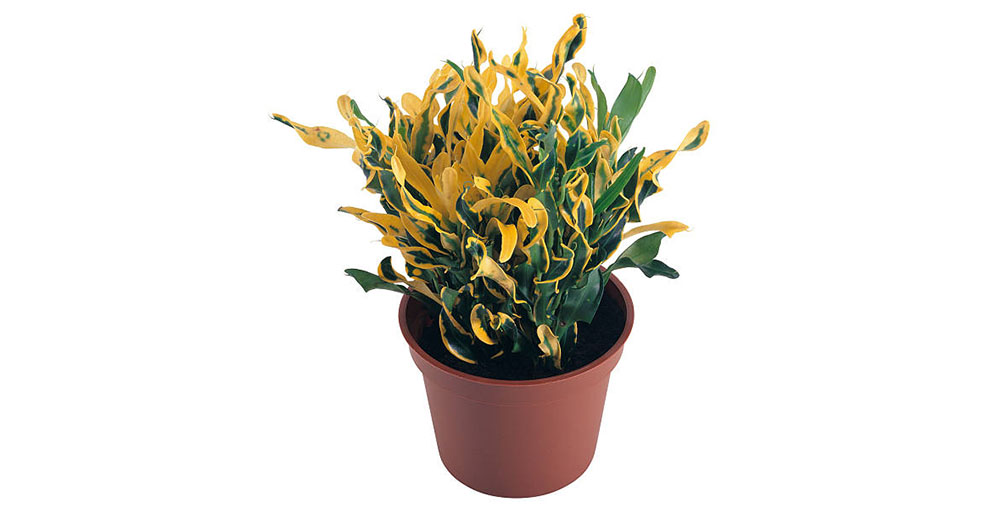
Healthy snake plants are green with some yellow or silver streaks. Brown or yellow leaves might indicate underlying issues, such as root rot, pests, and overwatering.
You can get rid of this issue by checking the water level. Overwatering stresses the plant and results in root rot, making it prone to pest attacks.
2. Dropping Or Falling Over Leaves
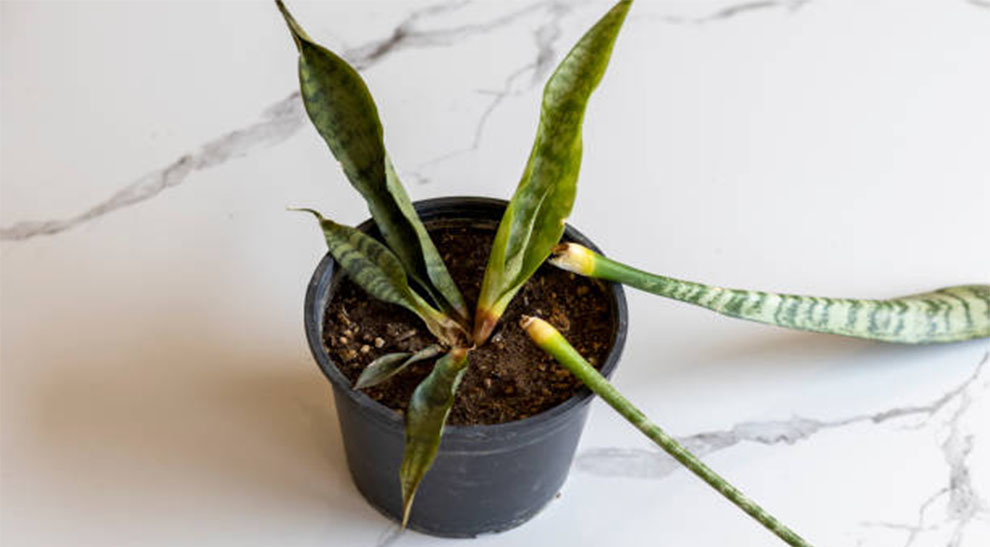
In a snake plant, the healthy leaves stand erect and grow upwards. However, insufficient light, excessive watering, and poor potting soil can result in leaves flopping over or dropping.
If you do not use a well-draining potting mix, the soil might become soggy, which may have a detrimental impact on its health.
Making changes in mother in law’s tongue care like lowering the watering frequency, changing the soil to a well-draining one, and moving the plant to a brighter location will help.
3. Smelly Soil
At times the soil may smell, indicating root rot. Dig out some soil and try sniffing it. If there is root rot, it may smell foul. But you can save the plant.
For this, inspect the roots to assess if it is possible to recover the root system or if it is too late. Remove the mushy roots and clean before replanting the snake plant.
4. Curling Leaves
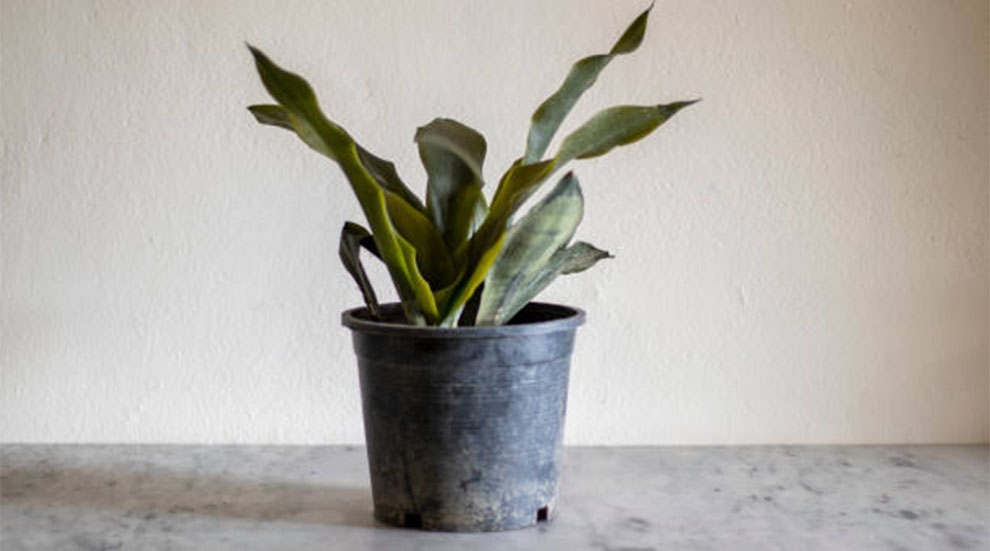
Leaf curling is a common problem caused by insect infestation. Thrips are the most common reason for it. Examine the leaves closely with a magnifying glass. The handling of these leaves is simple.
To keep pests away, remove the cut, curled leaves and treat the remaining leaves with neem oil or vegetable soap. New leaves will eventually start to erupt.
Snake Plant Information, Doubts, & Myths
Ques 1. How To Propagate Snake Plants?
Ans. Taking care of snake plants is easy. Similarly, it is also effortless to multiply them. Here are some steps for propagation:
- Look for a healthy leaf around the base, and cut it, making an upside-down V-cut towards the bottom.
- Now, insert the leaf into a clean jar.
- Ensure that the water level is somewhat above the V cut.
- In about three to five weeks, you will see the roots developing. You can let the snake plant stay in the water or transfer it to the soil.
Alternatively, division propagation also works with the snake plant. In this method, you will take the mature snake plant from the container and separate the pieces. These may be interconnected with a thick rhizome, seeming like a root, but it may not be so.
Ques 2. Is Snake Plant Toxic To Cats And Dogs?
Ans. Sadly, snake plants are toxic to cats and dogs. It is not a myth but a fact.
Ques 3. Do Snake Plants Do Better Inside Or Outside?
Ans. Snake plants do best indoors with limited, indirect sun.
Ques 4. What Are The Disadvantages Of Snake Plants?
Ans. Some of the cons associated with snake plants are:
- They grow slowly.
- It is toxic for pets and humans.
- It is susceptible to frequent leave drops
- It seeks cold temperatures to grow well.
- It is prone to fungal infections.
Related: How long do snake plants live?
Summing Up…
Snake plants has so many benefits, we hope these snake plant care tips can help you take good care of this easily manageable and versatile houseplant. Ensuring the snake plant dries out before the next watering, keeping it away from the pets and the kids, and altering the soil as required can help keep your space refreshed for many months.
